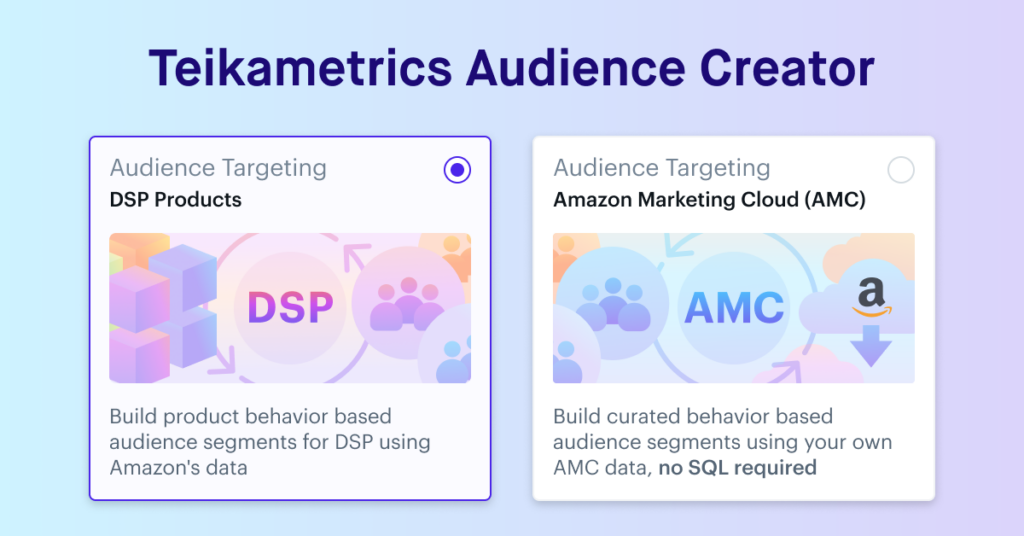Product detail pages, shopper reviews, and ads are all full of words. Those words matter, especially when you’re trying to compete on the Amazon marketplace.
Liz Downing, Ecommerce Marketing Manager, invited Lauren Fairbanks of S&G, and Becky Trowbridge of eComEngine, to talk about how your choice, understanding, and adaptation of words influence your success on Amazon.
Topics covered
- Why your product detail page can cause negative (or positive) Amazon product reviews
- How your product page content directly impacts the success of your advertising on Amazon
- Ways your product reviews can inform changes to optimize your Amazon listings
- How having more (and better) Amazon product reviews can help your advertising
Show Links
- Follow Liz Downing, Ecommerce Marketing Manager, Teikametrics
- Follow Lauren Fairbanks, Partner and CEO, S&G Content Marketing
- Follow Becky Trowbridge, Content Strategist, eComEngine
- Read Get Amazon Reviews: A Seller’s Guide from eComEngine
Watch the Amazon Words Roundtable Replay
Webinar Highlights
Take the time to create great listings
Liz observed that a lot of sellers are in a hurry to get their listings up and running but there are consequences to not taking the time to get them right.
“If your listing doesn’t have the right words, if your listing isn’t compelling, if your listing has the wrong information, you’re in trouble. If your listing has the wrong information, then you get bad reviews. If your listing has the wrong words in it, then the keywords that you’re supposed to try to go for with your advertising, that’s not going to work either. So it all starts with great listing copy.” – Liz Downing
Write listing titles of the right length
Liz and Lauren talked about how it’s important to write listing titles of the right length. They’re an opportunity to use keywords and share critical product information but you don’t want to keyword stuff or overshoot Amazon’s limit of 200 maximum characters including spaces.
“It really is down to a science now. It can’t be too short because then you’re not going to be able to fit in the key components of a title. And it can’t be too long.
We actually pretty often see a lot of listings that have titles that are over the Amazon required limit. When you do that, you’re just shooting yourself in the foot. So a lot of people will try to stuff as many keywords and features and benefits and the brand name and the product name and everything into a title. And really, they need to focus on a primary keyword, what the product is, and any major descriptors…
We want it to be long enough to be searchable, but short enough to be concise and get to the point.” – Lauren Fairbanks
Remember you’re writing for humans
Lauren pointed out that, yes, you’re writing listings for an algorithm, but you’re also writing them for humans who will read them and make shopping decisions.
“At the end of the day, you’re writing descriptions for people, for shoppers.
So you really need to balance everything that you’re optimizing for search algorithm with the fact that real people are going to be reading these descriptions.” – Lauren Fairbanks
A/B test keywords in product titles
A great thing to test, according to Lauren, is keywords in product titles. That’s because you know how you describe your product but you need to test whether that’s how shoppers in the market search for your product and also what other listings you’re competing against on keywords.
“Typically with any kind of description, we look at a primary keyword and then typically two to three secondary.
So playing around with keywords is always a good idea because you really never know. You might think that this primary keyword is going to be driving all of the traffic, but it might be more competitive and a harder keyword to rank for.
So a secondary keyword that is winning a little bit less traffic, but it’s got less competition and you can rank higher on the first page of Amazon search results might return much better results.”- Lauren Fairbanks
Use listings to set expectations
Becky says returns and poor reviews often happen because of listings that don’t set realistic expectations. So, set clear expectations with your listing words and images, and remember to update your listings if something about your product changes.
“You’re setting expectations with your listing… You can’t go to a physical store and check out this product. So whatever you’re saying in that product description at the top of the pages and your images and video is all that you have to stand out from competitors.
So if your listing description is inaccurate, we see a lot of negative reviews that come from people just saying, Hey, I bought this because I needed it to fit in this space. And you know, it wasn’t the right size.” – Becky Trowbridge
Communicate the right way with customers who leave reviews
Becky talked about developments in the tools that Amazon makes available to sellers to communicate with shoppers and respond to negative reviews. These tools have fairly limited functionality, but they do prevent you from inadvertently violating Amazon’s rules.
“If you are brand registered, there’s now a feature where you can actually respond to negative reviews. So if you have a one- to three-star rating and you’re the brand owner, you can actually go into your customer reviews dashboard and you have the option to do two things. You can either send a message that allows you to send a refund or a replacement… Or you could send a message, also a template from Amazon, that basically just asks, Hey, what went wrong?” -Becky Trowbridge
Check reviews for language to use in your listings
After doing keyword research and identifying the benefits and features of a product, Lauren says she looks to product reviews to understand what shoppers like about a product. That can give you insight into what your audience wants to read in the product description.
“We go through the product reviews to see if there are features and benefits that people are calling out in a positive light over and over and over again because that really gives you good insight.
You might think that the reason that widget a is selling so well is because it’s made of high-quality aluminum. But you might notice on all the product reviews that everyone loves it because it is a specific color or a specific shape.
So whatever kind of those recurring features and benefits that people are talking about over and over again in reviews and in a positive light, you really want to touch on those in your descriptions, in your bullet points, because that is clearly what is driving happy buyers.” -Lauren Fairbanks
Get help to sift through your reviews
The whole group talked about tools and tricks to sift through the information you can obtain from product reviews.
“The word cloud that Amazon generates at the top of your product reviews is really helpful… Amazon pulls together commonalities and then you can see those phrases that are coming up over and over again and then you can click on them and see the reviews…
Feedback Five makes it really easy to download all of your product reviews. We have a lot of really nifty graphs and analytics to help you see trends over time. You can actually see ratings as well, which I think is huge for a lot of people.” -Becky Trowbridge
Have a strategy for long tail keywords
Lauren and Liz both talked about the value of including long tail keywords in your strategy – for listings and for ads. Long Tail keywords tend to have less search volume but they can also have less competition, making it easier to win conversions with them.
“In a lot of categories, main keywords are very, very competitive, very, very expensive, and you still have to bid on them and you still have to have some sort of strategy about that. But if you’ve got a good longtail keyword strategy that helps bolster you with little ad spend and little competition that helps you in the long run.” – Liz Downing





